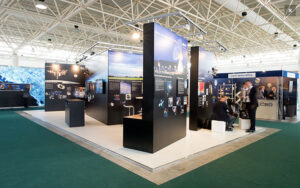Experiential marketing is no longer just about hosting events—it’s about creating immersive brand experiences that engage audiences on a deeper level. As consumer expectations evolve, brands must embrace new technologies and strategies to stay ahead.
In 2025, experiential marketing will be driven by hyper-personalization, sustainability, and immersive digital interactions, redefining how brands connect with their audiences. This article explores these key trends and how businesses can leverage them to enhance engagement, boost brand recall, and create memorable experiences.
1. Hyper-Personalization: AI-Driven, Real-Time Brand Engagement
Consumers no longer want generic experiences; they expect personalized interactions that cater to their preferences in real time. Thanks to artificial intelligence (AI), brands can now collect and analyze data instantly to create adaptive marketing experiences.
How AI is Transforming Experiential Marketing
– AI-Powered Activations: Brands are using AI to customize interactions based on user behavior, delivering content that resonates with each individual.
– Interactive Displays & Smart Tech: AI-driven kiosks, facial recognition, and chatbot-assisted experiences enhance engagement.
– Personalized Event Journeys: AI helps track attendee behavior, offering tailored event experiences based on past interactions and real-time preferences.
2. Sustainable Events: The Rise of Eco-Friendly Brand Experiences
Sustainability is no longer a trend—it’s a necessity. Consumers are increasingly conscious of the environmental impact of events, pushing brands to adopt sustainable practices in their marketing strategies.
Key Sustainability Trends in Experiential Marketing
– Eco-Friendly Materials: Brands are shifting away from plastic and non-recyclable materials, opting for biodegradable and reusable options.
– Carbon-Neutral Events: Companies are implementing green initiatives, such as solar-powered event setups and carbon offset programs.
– Digital Swag & Paperless Events: Instead of printed materials, businesses are offering digital brochures, e-gifts, and virtual experiences to reduce waste.
3. Immersive Digital Interactions: AR, VR & Holograms in Experiential Marketing
Technology is revolutionizing experiential marketing by offering immersive, interactive experiences. Augmented reality (AR), virtual reality (VR), and holograms are helping brands engage audiences in ways never seen before.
How Brands Are Using AR, VR & Holograms
– Augmented Reality (AR) Product Demos: Consumers can try on clothes, visualize furniture in their homes, or explore new products through interactive AR experiences.
– Virtual Reality (VR) Brand Experiences: Companies are transporting attendees into virtual worlds where they can interact with the brand in a fully immersive environment.
– Holographic Projections: Holograms are being used to display 3D products, celebrity endorsements, and interactive brand messaging in real time.
How to Stay Ahead in 2025
Experiential marketing is evolving into a technology-driven, highly personalized, and sustainability-focused industry. Brands that want to stay ahead must integrate AI-driven personalization, eco-friendly event strategies, and immersive digital experiences into their marketing efforts.
At MENT ADS, we specialize in creating experiential brand activations that drive engagement and deliver results. Want to explore how these trends can elevate your next campaign?




